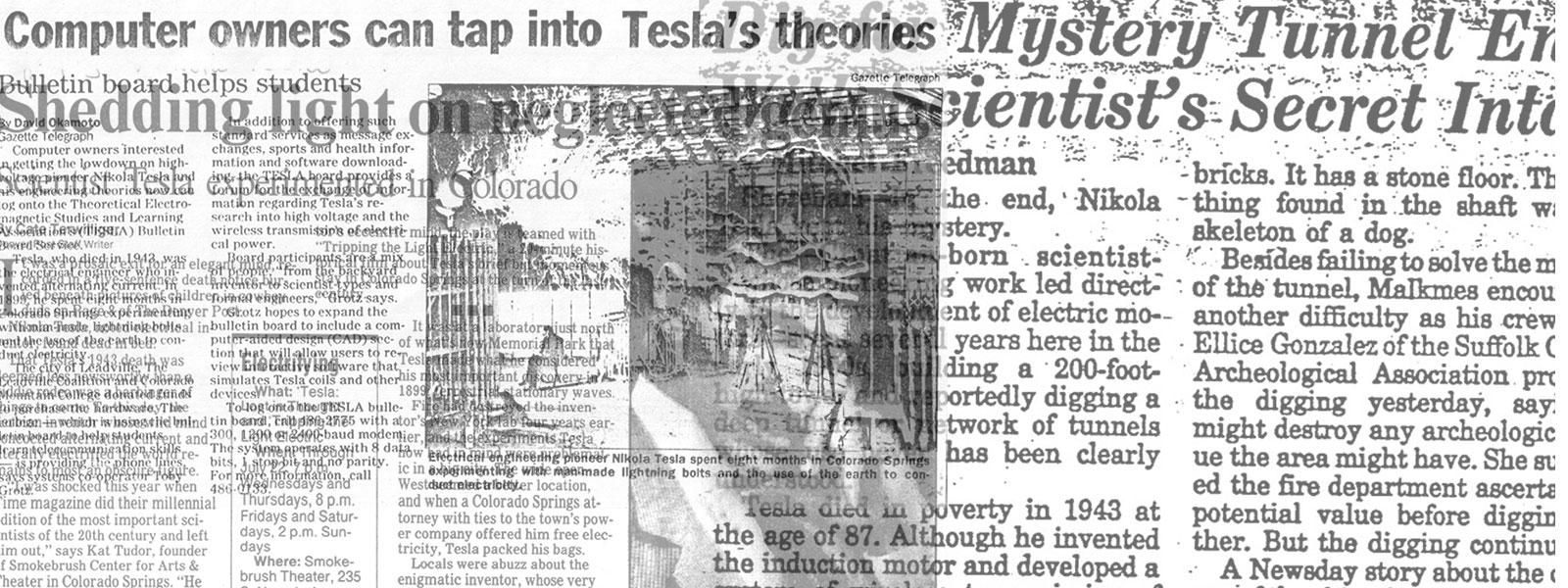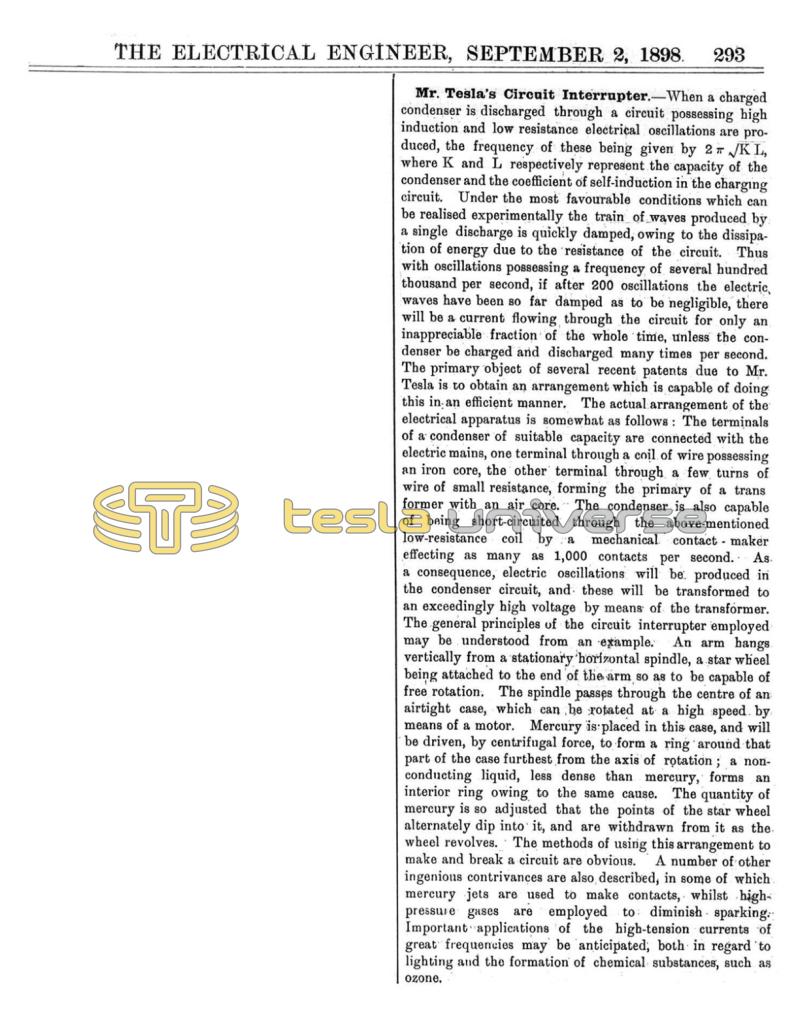
Nikola Tesla Articles
Mr. Tesla's Circuit Interrupter
When a charged condenser is discharged through a circuit possessing high induction and low resistance electrical oscillations are produced, the frequency of these being given by 2π √KL, where K and L respectively represent the capacity of the condenser and the coefficient of self-induction in the charging circuit. Under the most favourable conditions which can be realised experimentally the train of waves produced by a single discharge is quickly damped, owing to the dissipation of energy due to the resistance of the circuit. Thus with oscillations possessing a frequency of several hundred thousand per second, if after 200 oscillations the electric waves have been so far damped as to be negligible, there will be a current flowing through the circuit for only an inappreciable fraction of the whole time, unless the condenser be charged and discharged many times per second. The primary object of several recent patents due to Mr. Tesla is to obtain an arrangement which is capable of doing this in an efficient manner. The actual arrangement of the electrical apparatus is somewhat as follows: The terminals of a condenser of suitable capacity are connected with the electric mains, one terminal through a coil of wire possessing an iron core, the other terminal through a few turns of wire of small resistance, forming the primary of a transformer with an air core. The condenser is also capable of being short-circuited through the above-mentioned low-resistance coil by a mechanical contact - maker effecting as many as 1,000 contacts per second. As. a consequence, electric oscillations will be produced in the condenser circuit, and these will be transformed to an exceedingly high voltage by means of the transformer. The general principles of the circuit interrupter employed may be understood from an example. An arm hangs vertically from a stationary horizontal spindle, a star wheel being attached to the end of the arm so as to be capable of free rotation. The spindle passes through the centre of an airtight case, which can be rotated at a high speed by means of a motor. Mercury is placed in this case, and will be driven, by centrifugal force, to form a ring around that part of the case furthest from the axis of rotation; a nonconducting liquid, less dense than mercury, forms an interior ring owing to the same cause. The quantity of mercury is so adjusted that the points of the star wheel alternately dip into it, and are withdrawn from it as the wheel revolves. The methods of using this arrangement to make and break a circuit are obvious. A number of other ingenious contrivances are also described, in some of which mercury jets are used to make contacts, whilst high-pressure gases are employed to diminish sparking. Important applications of the high-tension currents of great frequencies may be anticipated, both in regard to lighting and the formation of chemical substances, such as ozone.
